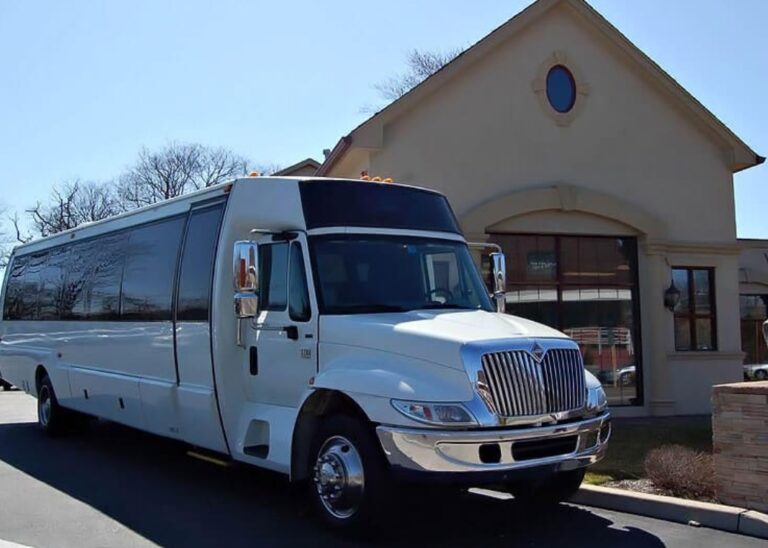What’s The Difference Between A Coach And A Bus? Explained
This article will explain What’s The Difference Between A Coach And A Bus? Understanding the difference between a coach and a bus is crucial for travelers, transport enthusiasts, and professionals in the transportation industry. Both serve the fundamental purpose of transporting people, yet they have distinct characteristics, functionalities, and uses that set them apart.
Key Takeaways
- A coach is typically used for longer distances and is designed for comfort.
- Buses are more often used for shorter, urban routes.
- Coaches have more amenities like reclining seats, toilets, and air conditioning.
- Buses are usually more frequent and have higher capacity.
What’s The Difference Between A Coach And A Bus?
The main difference between a coach and a bus is their intended use and design features. A coach is designed for longer-distance travel, offering amenities like comfortable seating, toilets, and sometimes entertainment systems for passenger comfort.
Buses, in contrast, are designed for shorter, urban, or suburban routes, focusing on higher capacity and frequent stops without the additional comfort amenities found in coaches. Coaches are typically used for intercity travel, while buses are integral to city and local public transport systems.

Characteristics of a Coach
Design and Comfort Features
Coaches are designed with long-distance travel in mind. They offer a higher level of comfort compared to buses. Inside a coach, you’ll typically find:
- Reclining seats with more legroom.
- Onboard toilets.
- Air conditioning and sometimes individual entertainment systems.
Coaches are less frequent than buses but provide a smoother and more comfortable journey, especially for longer trips.
Intended Use and Routes
Coaches are primarily used for intercity travel, covering longer distances. They often operate on a schedule, similar to trains, connecting different cities or countries. Unlike buses, coaches are not meant for short, urban commutes but rather for travel that spans several hours or even days.
Characteristics of a Bus
Design and Functionality
Buses are designed for shorter, urban, or suburban routes. Their design focuses on:
- Higher capacity seating.
- Standing areas for short trips.
- Accessibility features for quick boarding and alighting.
Buses generally lack the comfort features of coaches, such as reclining seats or onboard toilets.
Operational Routes and Frequency
Buses operate mainly within cities or suburban areas. They are integral to the public transport system, offering:
- Frequent stops and regular service.
- Routes that cover almost all parts of a city.
- Flexibility for passengers with different schedules.
Comparison of Coach and Bus

Comfort and Amenities
Comparing the two, coaches offer a more comfortable and amenity-rich experience. This is crucial for passengers traveling long distances who require comfort and facilities like toilets and air conditioning.
Route and Frequency
Buses have the upper hand in terms of frequency and route coverage within urban areas. They cater to daily commuters and offer flexibility with multiple stops and regular service throughout the day.
Suitability for Different Types of Travel
Long-Distance vs. Short-Distance
The choice between a coach and a bus greatly depends on the distance of the journey. For long-distance travel, coaches are more suitable due to their comfort-oriented features. For daily, short-distance urban travel, buses are more practical and efficient.
Passenger Needs and Preferences
Travelers’ needs also dictate the choice. Those prioritizing comfort and amenities for a long journey would prefer a coach, whereas those needing quick, frequent transit would opt for buses.
Cost and Accessibility
Pricing Structure
Generally, coach travel is more expensive due to the additional comforts and services provided. Bus fares are typically lower, reflecting the basic, utilitarian nature of the service.
Accessibility for All Travelers
Buses are often more accessible for all types of travelers, including those with disabilities. They are designed for quick, frequent stops, making them a more inclusive mode of transport within urban areas.
Why Do They Call A Bus A Coach?
The term “coach” about a type of bus has historical roots. Originally, the word “coach” referred to a horse-drawn carriage designed for comfortable, long-distance travel. This term evolved.
With the advent of motorized vehicles, the term “coach” began to be applied to motor vehicles designed for similar purposes – comfortable, long-distance travel.

The key aspect that carried over from the original horse-drawn coaches to modern motor coaches is the emphasis on passenger comfort, especially for longer journeys.
Unlike regular buses, which are designed for shorter, more frequent trips primarily in urban areas, motor coaches are equipped with amenities like comfortable seating, toilets, and storage space for luggage, reflecting their lineage and purpose.
Do Americans Say Coach Or Bus?
In the United States, the terms “coach” and “bus” are used differently based on the context of the travel. Americans typically use the word “bus” when referring to vehicles designed for short-distance, urban, or suburban public transportation.

These are the common vehicles seen in cities and towns for daily commuting. On the other hand, the term “coach” is used in the U.S. when referring to a more comfortable, amenity-rich vehicle used for longer distances, such as those connecting different cities or for touring purposes.
The distinction is less about the vehicle itself and more about its intended use and the level of comfort it provides. However, the term “bus” is more universally understood and used in everyday language in America, while “coach” is more specific to the context of travel and comfort.
What Is The Difference Between A Coach Bus And A School Bus?
The primary differences between a coach bus and a school bus lie in their design, purpose, and features. A coach bus is designed for long-distance travel, providing amenities like comfortable reclining seats, air conditioning, onboard restrooms, and sometimes individual entertainment systems. They are built for comfort and convenience on longer trips.
School buses, on the other hand, are designed with safety and functionality in mind for transporting children to and from school. They are easily recognizable by their distinctive yellow color in the United States, a color chosen for its high visibility.
School buses have safety features like reinforced sides, flashing lights, and stop signs. Internally, they are equipped with benches that can accommodate more passengers, reflecting the short duration of trips and the need to transport many children at once.
Conclusion
In summary, the main differences between a coach and a bus lie in their design, intended use, comfort level, and route structure. While coaches are tailored for long-distance travel with a focus on comfort, buses cater to urban commuters with frequent stops and higher capacity.
Understanding these differences can greatly influence travel decisions, ensuring that passengers choose the most suitable mode of transportation for their needs. What’s The Difference Between A Coach And A Bus? The answer lies in the journey you plan to undertake, the comfort you desire, and the convenience you require.
Frequently Asked Questions
How do accessibility features differ between coaches and buses?
Buses are typically more accessible for passengers with disabilities, featuring low-entry designs, ramps, and dedicated space for wheelchairs. Coaches, while they can have accessibility features, are less focused on these aspects due to their design for long-distance travel.
Are there different licensing requirements for driving a coach versus a bus?
Licensing requirements depend on the region and the type of vehicle. Generally, both coaches and buses require a commercial driver’s license (CDL) with specific endorsements depending on the vehicle’s size, passenger capacity, and whether it’s used for interstate travel.
What is the typical seating capacity difference between a coach and a bus?
The seating capacity can vary widely, but generally, buses have a higher seating capacity to accommodate more passengers for short distances. They also have standing space for peak times. Coaches have fewer seats but provide more space and comfort per passenger, suitable for longer journeys.
How does the frequency of service compare between coaches and buses?
Buses typically run with higher frequency, especially in urban areas, to cater to daily commuters. They often operate on set schedules with frequent stops. Coaches, on the other hand, have less frequent services, are often scheduled for long-distance travel, and may require booking.

Welcome to the exhilarating world of Matt Rex, a professional car racer turned renowned vehicle enthusiast. Immerse yourself in his captivating blog as he shares heart-pounding adventures, expert reviews, and valuable insights on cars, trucks, jets, and more. Fuel your passion for speed and discover the beauty of vehicles through Matt’s engaging stories and meticulous expertise. Join the ever-growing community of enthusiasts who find inspiration and expert advice in Matt Rex’s blog—a digital hub where the thrill of speed meets the pursuit of knowledge.






![How Do You Get Your Bus Home? [A Complete Breakdown]](https://www.turbochaos.com/wp-content/uploads/2024/01/How-Do-You-Get-Your-Bus-Home-768x599.jpg)
